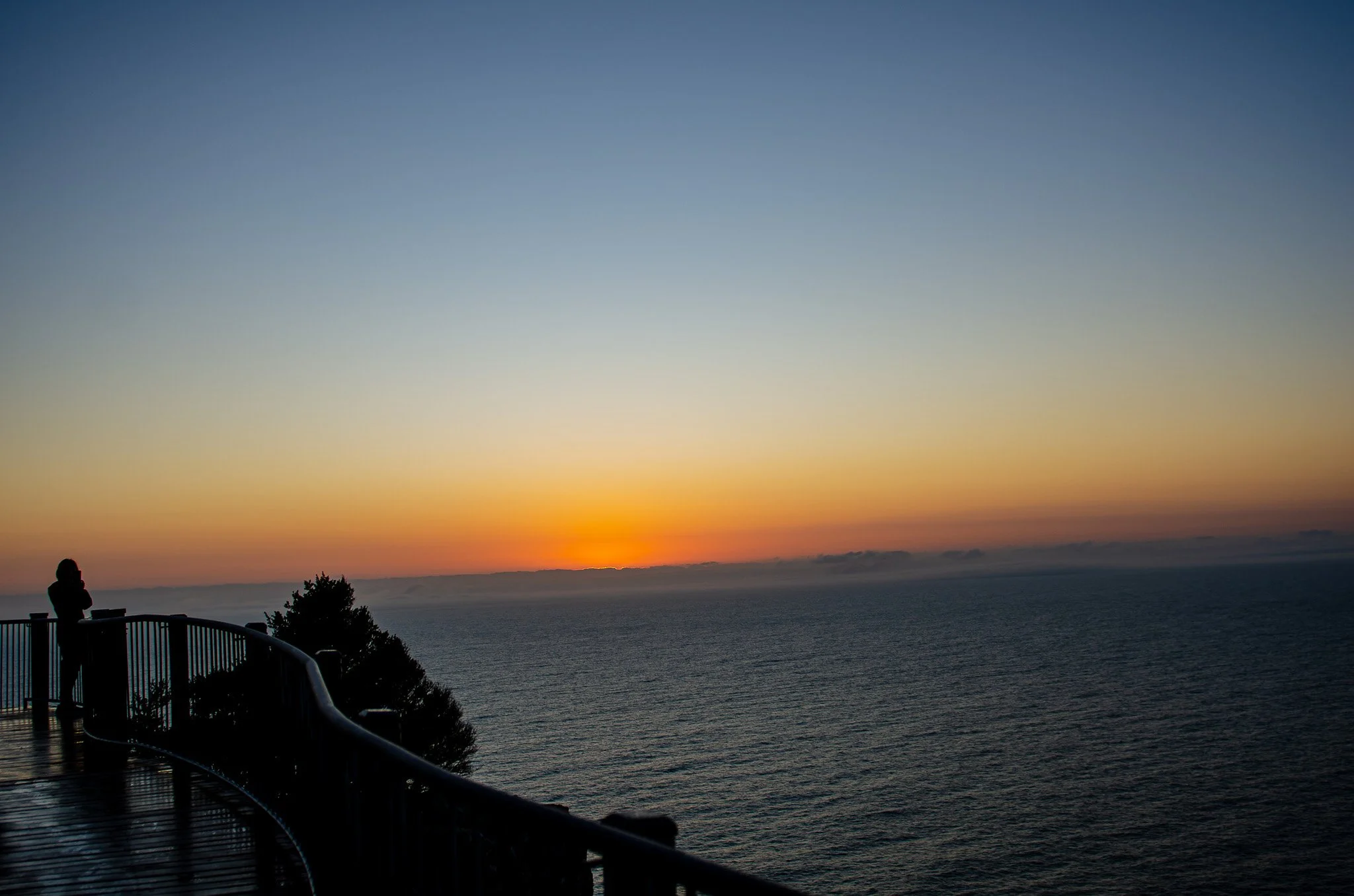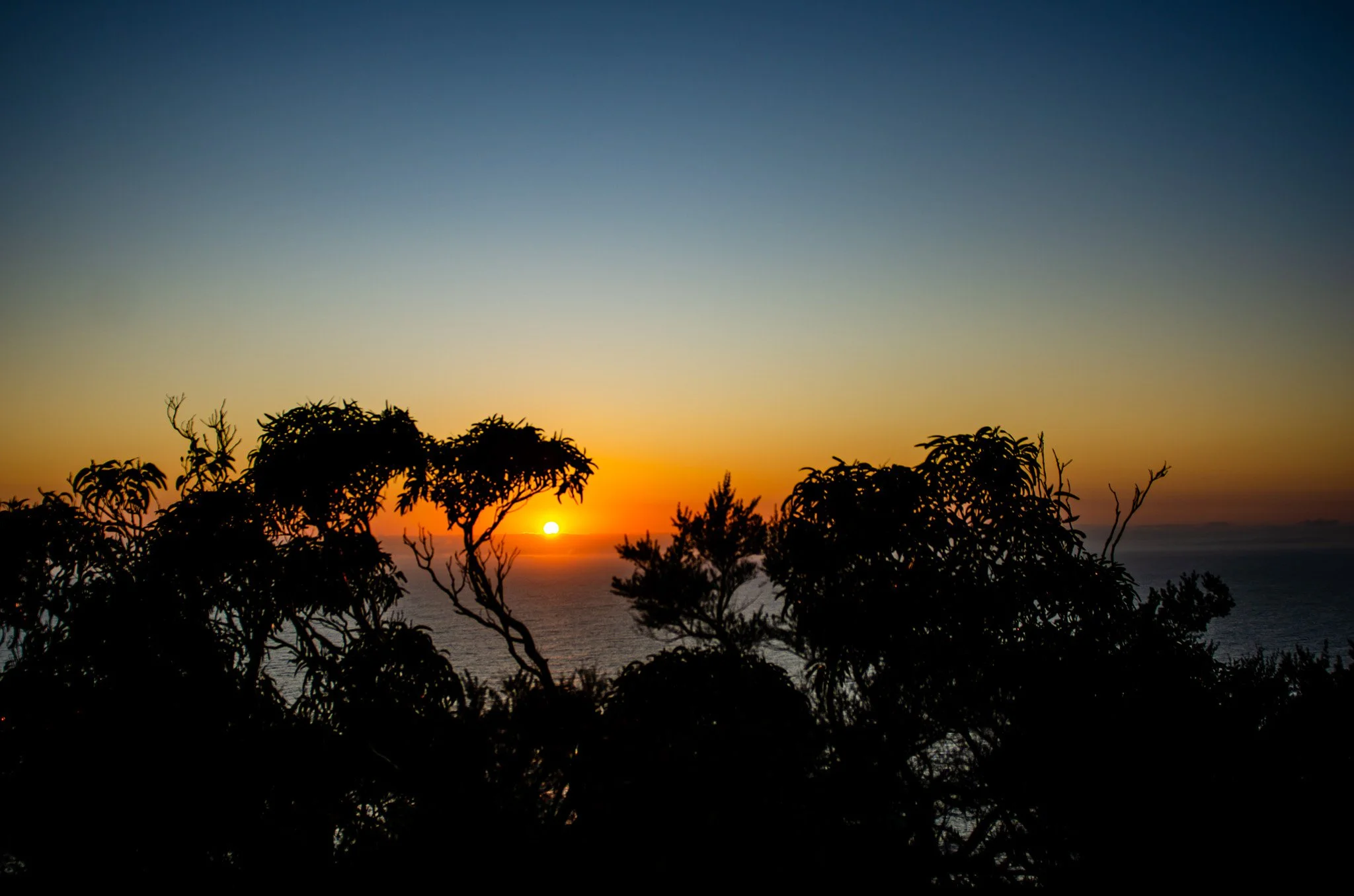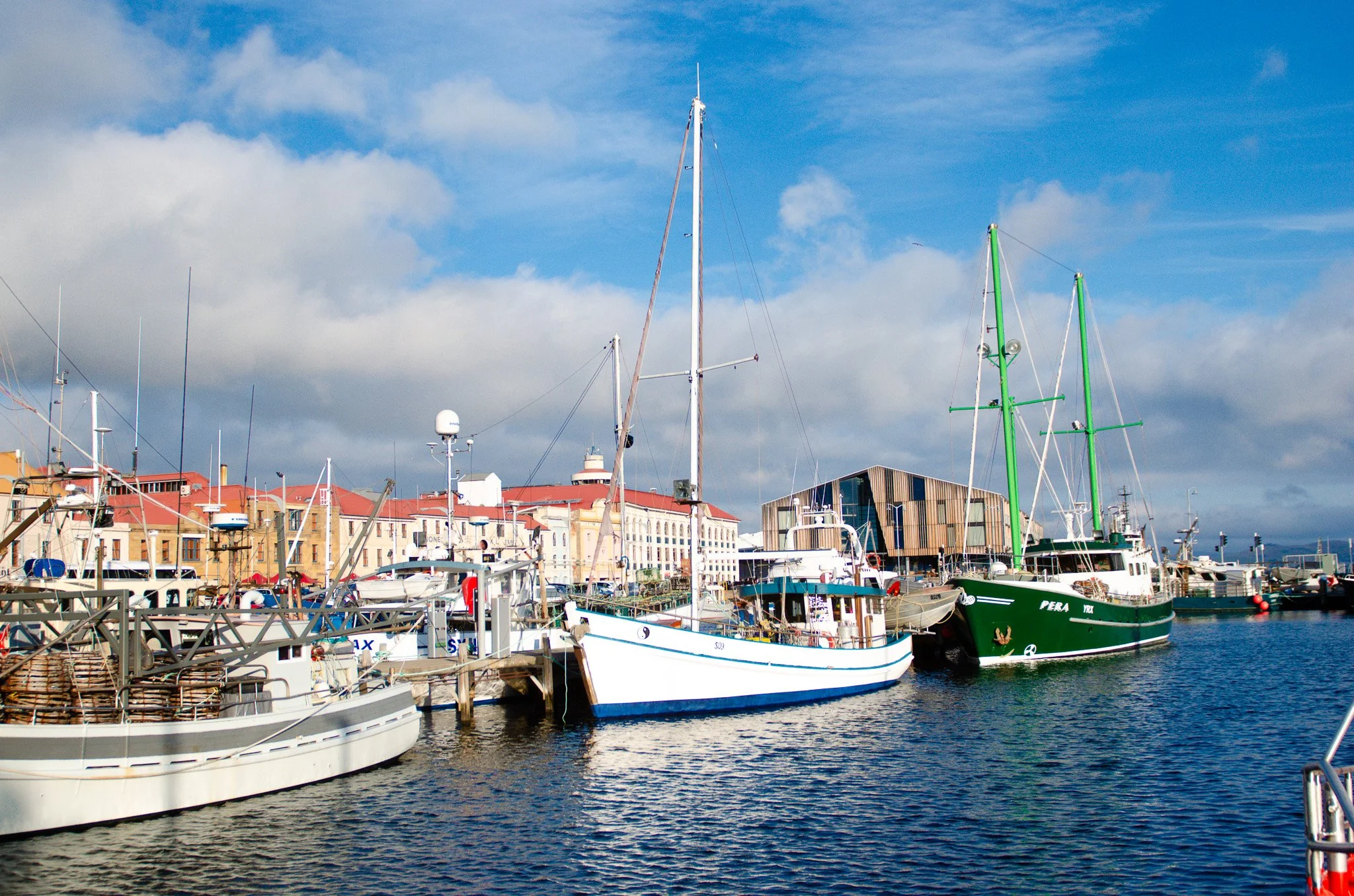Tasmania Trip - Part 6
The Last Light of Freycinet and a Return to Hobart
We arrived at Cape Tourville just before sunrise. This time, the fog had lifted completely, revealing everything we’d missed the day before. As we approached the edge of the cliff, the dramatic drop to the ocean came into view — a sheer, vertiginous plunge, raw and awe-inspiring. We were quietly grateful for the sturdy metal railing that separated us from the vast, wild void beyond.
It didn’t take long to find the perfect spot. The sky was already shifting — soft hues of orange and gold melting into a pale blue canvas. As the sun began its slow ascent over the horizon, the colours deepened, and the landscape came alive in golden light. There’s something universal, something grounding, about watching a sunrise. No matter where you are in the world, it holds the same quiet promise: a new day, a fresh beginning — and what we choose to do with it is entirely up to us.
I wandered off in search of a different perspective and found a higher point near the lighthouse’s base. From there, I watched the sun peek through a tangle of silhouetted trees — a perfect moment, perfectly framed. Wanting to capture the lighthouse bathed in morning light, I made my way back toward the carpark. The angle was just right, the soft glow reflecting off its weathered surface like a beacon welcoming in the day.
Satisfied and still wrapped in that peaceful post-sunrise calm, we returned to Coles Bay for a final breakfast and to pack up our things. Our Tasmanian journey was nearing its end. Next stop: Hobart.
But before we left the peninsula, we made a detour — this time with clear intent. Bicheno was calling, and we had one thing on our minds: lunch at the famed Lobster Shack. We arrived early, just ahead of the lunch crowd and before the restaurant had opened its doors. To pass the time, we wandered across the now-familiar lichen-covered rocks nearby. Compared to the dramatic headlands we’d visited elsewhere, these formations were modest — but they offered a touch of light-hearted fun and a welcome chance to stretch our legs.
Just beyond the shack lay the Governor Island Marine Reserve, known for its rich underwater world — a diver’s dream. While we stayed dry, we were treated to another kind of spectacle: hundreds of seabirds crowded the island, their sharp cries rising in a chaotic chorus. We spotted kelp gulls, silver gulls, gannets, and cormorants, all jostling for space and shouting over the wind.
In hindsight, we learned Bicheno is also home to a famed blowhole — one we’d completely missed. Another reason to return one day. Tasmania, it seems, always holds something just out of reach.
Soon enough, the Lobster Shack opened its doors. True to its “ocean-to-plate” promise, the food was impossibly fresh. The Tasmanian rock lobster was the clear standout — sweet, tender, and cooked to perfection. It was no surprise to learn the restaurant had been awarded Best Seafood Restaurant Experience back in 2019. And yes, it lived up to every bit of the hype.
Bellies full and spirits high, we said goodbye to Bicheno and began the 2.5-hour drive to Hobart, the final leg of our journey. Time was tight — we had tickets to MONA (the Museum of Old and New Art), and with the museum closing at 5 PM, we wouldn’t make it if we checked in first. Thankfully, we’d booked our tickets online ahead of time and drove straight there.
MONA is not just a museum — it’s an experience. Conceived by David Walsh as a place to challenge the very notion of what a museum should be, it does exactly that, and then some. Perched along the Derwent River, its striking architecture belies what lies beneath — a multi-level, subterranean labyrinth carved into sandstone, where art meets shock, beauty, and bewilderment.
Inside, there are no wall labels. Instead, visitors are handed The O, a digital guide offering everything from academic notes to cheeky commentary — a tool that invites you to engage, question, and reflect. The exhibitions range from ancient relics to provocative contemporary works exploring sex, death, and the darker shades of humanity. It’s confronting, hilarious, sometimes baffling — and impossible to forget.
But MONA isn’t limited to its underground galleries. Above ground, the experience continues — sprawling lawns dotted with oversized art installations, an amphitheatre for open-air performances, and a winery where you can sip a glass of Moorilla’s finest as you watch the river drift by. There’s even a tennis court on the roof and a trampoline sculpture you can bounce on. It’s a place that indulges all the senses — and messes with your expectations in the best possible way.
Still buzzing from the wonderfully bizarre encounter with MONA’s world, we finally headed to our hotel to check in and freshen up. With just one night left in Tasmania, we ventured into the Hobart city centre, drawn by memories and a craving for seafood done right.
Our destination? The Drunken Admiral, a waterfront institution with a reputation for hearty meals and old-world maritime charm. As we walked along the harbour, something stirred — a quiet nostalgia. We’d stayed in this area on our honeymoon. Though much had changed, there were flickers of familiarity everywhere: the wharf’s wooden boards, the salty air, the way the late light shimmered on the water.
The restaurant was buzzing. After a short wait, we were seated in a cosy back section, the chatter of diners echoing off ship-themed walls. We ordered a few small plates — the waitress assured us the portions were manageable — and of course, we included the Salmon on the Rock. It arrived raw, laid across a sizzling hot stone. We cooked it ourselves at the table, searing each piece just the way we liked it. The result was buttery, flavourful, and unforgettable.
We lingered long after dessert, reluctant to let the night end. When we finally stepped out into the cool evening air, we took one last slow walk along the bustling waterfront. It had transformed since our last visit — more vibrant, more alive, humming with energy and people. Every restaurant seemed full, every table glowing under strands of fairy lights. The air was rich with the aroma of seafood and woodsmoke and spices.
We were too full to sample more, but the thought of it — of all that flavour and life packed into this little harbour — stayed with us.
Eventually, we wandered back to the hotel under a starlit sky, full in every sense of the word — of food, of memories, of gratitude. It had been a day of gold-lit sunrises, lobster feasts, provocative art, and one final toast to Tasmania’s wild, wonderful charm.
















